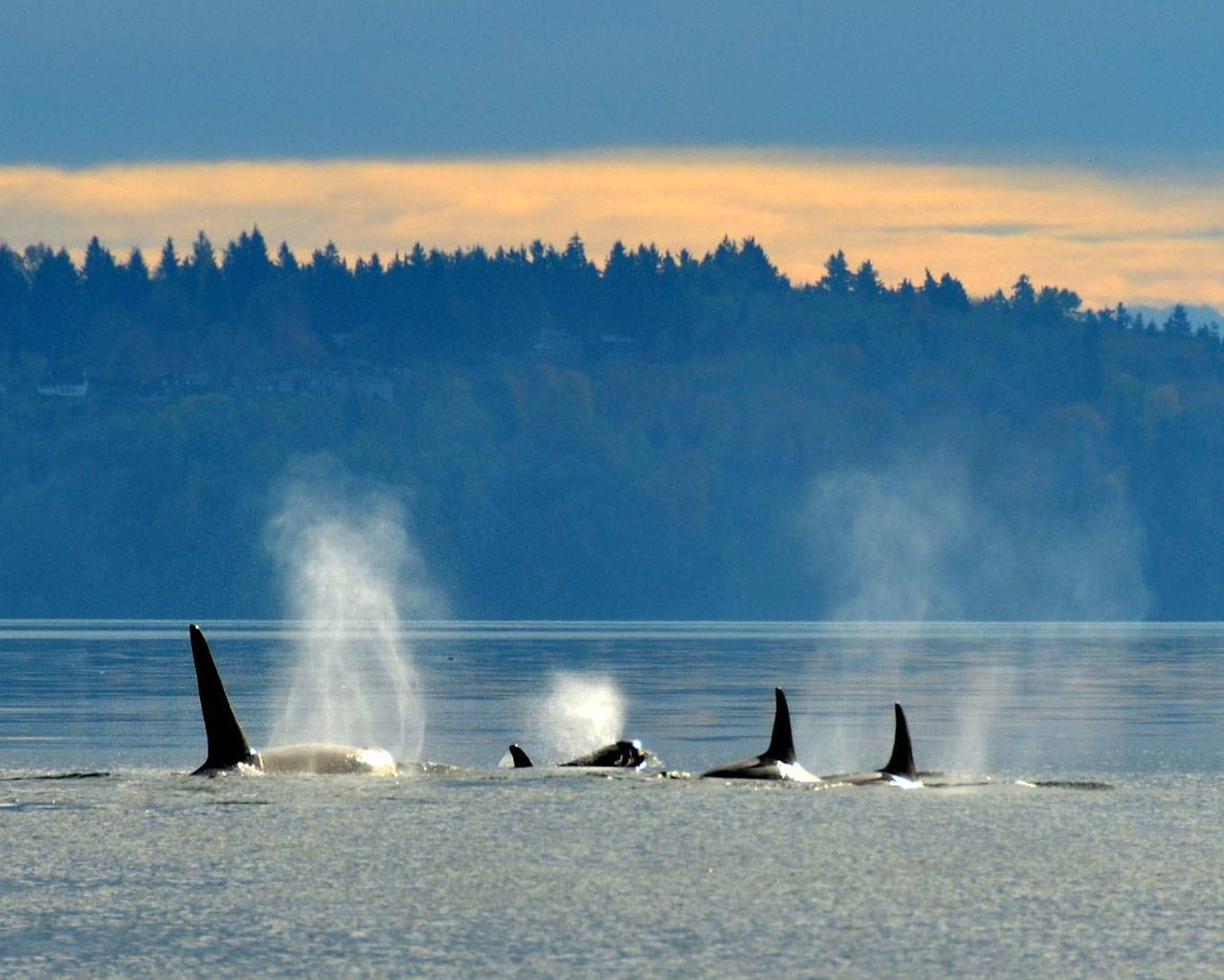Governor Jay Inslee signed an executive order last Wednesday appointing state agencies, tribal leaders, local governments, federal partners and other stakeholders to a new task force that will pursue immediate help for ailing orca whales and Chinook salmon recovery in the sound.
The order is set to include a number of municipalities and states as well as British Columbia, as orcas migrate long distances but encounter the same hazards that have forced their numbers into decline. Dangers posed by vessels, toxins in the water, habitat erosion and the loss of Chinook salmon are pushing the southern resident orcas rapidly toward extinction.
Amy Carey, executive director of Sound Action, a Vashon-based regulatory watchdog group that works to protect nearshore habitats and species, believes that saving the sound’s orcas depends on the broad
health of ecosystems that people may not fully appreciate.
“If you care about orcas, you need to be paying attention down to the very base of the food chain. They need these things that we’re working to protect,” she said.
Orca numbers have decreased from a recorded 98 in 1995 to just 76 today. The nonprofit has an exhaustive commitment to Puget Sound but its team, comprised of activists, biologists and attorneys, all know the mission and what’s at stake.
“We review every single permit that’s approved for nearshore development in the state,” said Carey. “We review all those permits to make sure they’re protecting habits. If it does not, we appeal. We take legal action, and we pursue that and try first and foremost to make sure that habitat is protected.”
Carey says she is optimistic that the executive order will make a difference, hope born out of necessity over the length of her career as an advocate.
“Studies are great. We know a lot. We know what we need to do,” she said. “We’ve had many years, many studies, many decades, many brilliant ecologists and researchers. I am hopeful that this taskforce and this executive order will lead to actions.”
But similar proclamations have been made before.
“Puget sound orcas have been in a lot of trouble for a very long time,” she said, praising the governor as a longtime environmental leader. “I’m optimistic. I certainly appreciate the governor’s passion and what I think is a very real commitment.”
Carey emphasized that the direction of the task force would need to be action-oriented.
“I think there is an opportunity for it to be different, but that’s going to take real action. Very strong action so that this does not result in an analysis that sits on a shelf,” she said.
Ann Stateler, or “Orca Annie” as she is widely known, of the Vashon Hydrophone Project, has a decidedly similar tone when it comes to past orca conservation efforts.
“Our endangered southern residents deserve this kind of attention,” said Stateler. “I guess my attitude is kind of wait and see. We’ve been through a lot of panels and task forces; there’s been a lot of research.”
“This is a significant step that the whales got this kind of attention. Whether or not this proves to be an empty gesture remains to be seen.”
Stateler is encouraged by a number of pledges made by the order, including the reduction of vessel noise and the increase of resources for potential oil spills.
“Maybe the urgency with this population going extinct is finally starting to resonate with other people,” she said.
Still, Stateler has doubts in the involvement of some key players — namely, the industry surrounding whale watching expeditions.
In the March 14 press release announcing the order, the governor’s office highlighted whale watching as contributing $60 million annually to the state’s economy, but Stateler says that tourism has proven, adverse effects on whale pods as continual stressors. A study by the National Oceanic and Atmospheric Administration last year found that restrictions placed on boating within the vicinity of southern resident orcas benefitted the whales without harming the whale watching industry.
Stateler is also concerned that the governor’s separate invitations for representatives of tribal governments and other conservation advocacy groups to participate in the new task force won’t be inclusive enough, a familiar thread in her line of work.
“I guess one issue I have with the local killer whale conservation groups is, there’s not a lot of ethnic and cultural diversity; in fact, I would say about zero in most of them,” said Stateler.
While contention among advocates, industry leaders and policy makers remains, Stateler believes that their cause is mutual, and that a diversity of opinion is exactly what the orcas need to guarantee their future.
“In the meantime of doing this half-hearted, anemic stuff, the real problems keep getting worse and worse. We’re at the point the now we need to address the difficult, complicated stuff,” she said.
“Everybody needs to sacrifice if we don’t want these whales extinct.”
Amy Carey of Sound Action agrees.
“That is the greatest hope: that this is a new day and that it is action oriented,” she said. “That is absolutely going to require changes at every state agency and how they either approach some of their regulatory processes, [how they] apply the law to their regulatory processes, it will absolutely require change.”
The task force will submit a first report to the governor detailing proposed solutions by Oct. 1 and is intended to address “all of the major threats to Southern Residents, including prey availability, legacy and ongoing toxic contaminants, and disturbance from noise and vessel traffic,” according to the order.



